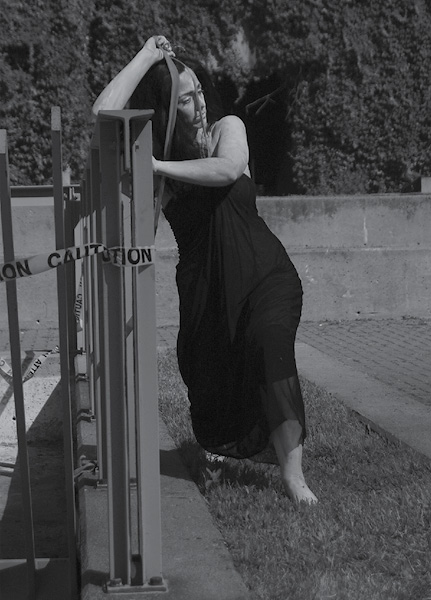
MOURNINGFESTO: I GRIEVE (EU LUTO)
first performed on June 27, 2014
Square Viger, Montreal, Canada
performed once in 2014
CARLA MELO
Toronto, Canada
710596344c710596344a710596344r710596344l710596344a710596344b710596344e710596344a710596344m710596344e710596344l710596344o710596344@710596344g710596344m710596344a710596344i710596344l710596344.710596344c710596344o710596344m
hemisphericinstitute.org/hemi/en/enc14-urban-interventions/item/2366-enc14-ui-melo-mourningfesto
MOURNINGFESTO: I GRIEVE (EU LUTO)
CARLA MELO
Just as the translation of the noun “grief” (a private feeling) from English to Portuguese offers us “luto”(mourning), the public manifestation of grief, it also evokes the act of “lutar” (to struggle). Inspired by my native language, butoh aesthetics, mourning practices, structured improvisation, modernist manifestos, the Situationists and Afro-Brazilian cosmologies, I created an itinerant solo-performance/urban intervention—a self-invented mourning ritual that took place in a public park in Montreal and lasted for about 45 minutes.
As I moved out of a fetal position and began to slowly move across the urban space my goal was to find a place where I could “mourningfest,” that is: to publicly manifest the pain over the loss of my mother and my gratitude to her spirit for the gift of my life. I also wanted to express that the struggle of the grieving subject is twofold: She must struggle with loss itself and with normative notions of proper grieving.
A powerful component of the piece was the unpredictability that is always at play when a performance directly interacts with spectators in an intimate manner and also the use of ritualistic objects and clothes whose meanings transformed throughout the pieces. For instance, a tunic printed with self-help and psychological texts on the “stages of grieving” served as shelter, wall and a restrictive garment that is eventually torn up, while a number of transparent water filled balloons that I carried across the park conjured images of the womb, tears and containment.
In this sense, “Mouriningfesto” sought to embody and purge the ways in which the grieving process has been repressed, homogenized and regulated, particularly for women. By challenging the limits between private grieving and public mourning, the piece foregrounded the near absence of mourning rituals within contemporary urban spaces.